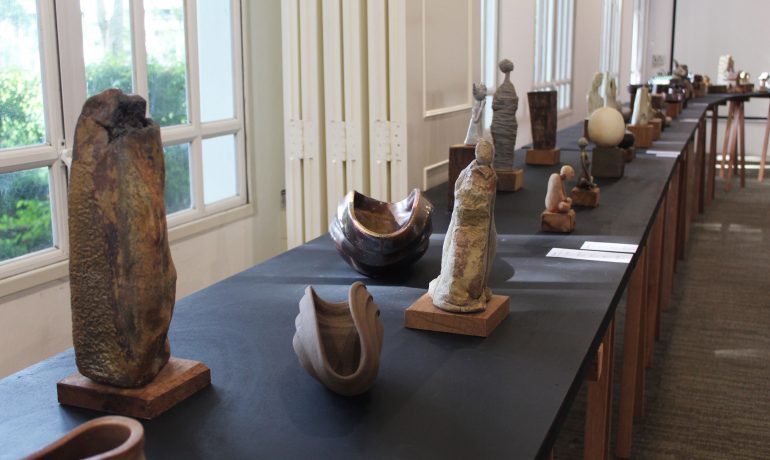How a new movement is firing up the artisanal ceramic scene using ancient techniques, local materials, and an unmistakably islander philosophy.
By Cole Yap
The skill of turning wet clay into pottery dates nearly as far back in pre-history as our caveman ancestors discovering the use of fire. In every civilisation and culture, remnants of clay vessels, bricks, and sculptures tell a story of their makers and the kinds of lives they led in their time.
So what makes a piece of pottery unique to an area or a group of people?
And what would define the island of Penang?
To Master Potter Ooi Woi Leong, the answer is a slowly growing movement of local pottery with a new name: Dao Shang Shao (島上燒).
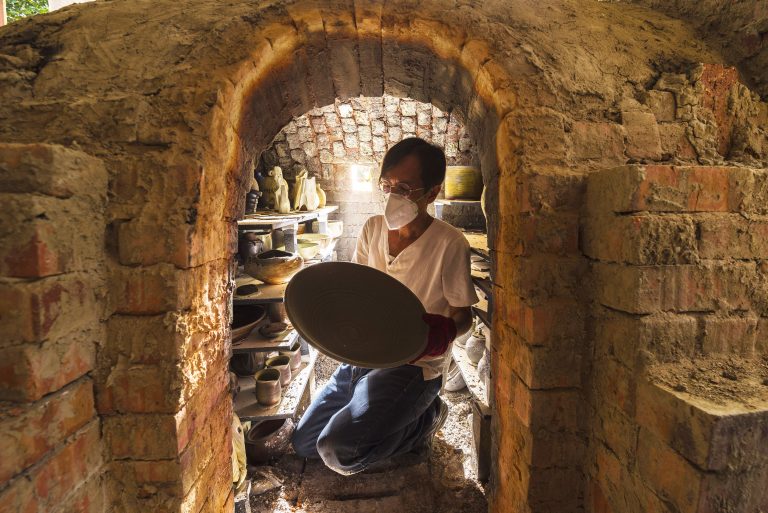
Master Potter Ooi Woi Leong arranging artwork inside the wood-fire kiln in Artopia, Balik Pulau
A fusion of ancient naming traditions, “Dao Shang (島上)” is a Mandarin word referring to Penang as Island, and “Shao (燒)” follows the convention of describing the fire or kiln, except in this case it is the Japanese kanji character—Yaki—read in Chinese to represent the merge of influences from both cultures.
This historic nomenclature is derived from ancient Yue, Ru, Seto, and Shigaraki wares, to name a few, where a combination of great talent and abundant terrain produced distinctive pottery styles fired in village kilns that the wares were named after.
What gives Dao Shang Shao pottery its signature colours and textures are the local raw materials used to create their unique clay bodies and glazes. Mr. Ooi collects red clay from northern hillslopes in Tanjung Tokong, Tanjung Bungah, and Batu Ferringhi, and black clay from around Balik Pulau. Once or twice annually, the wares are wood-fired in a modified traditional Anagama kiln over the course of three days.
The ideology behind Dao Shang Shao draws from the laid-back attitudes and multiculturalism in Penang, with an appreciation for more organic and unexpected qualities derived from Japanese wabi-sabi aesthetics.
Here, beauty is defined as “imperfect, impermanent, and incomplete”, and a mindful, almost meditative process of creation is emphasised over a flawless end product. The potters reflect on their internal state as they learn to work with the clay instead of forcing it to their will. Unlike more traditional Chinese ceramic methodologies, this free-spirited approach encourages spontaneity with less ambition to plan and correct pieces after their first form.
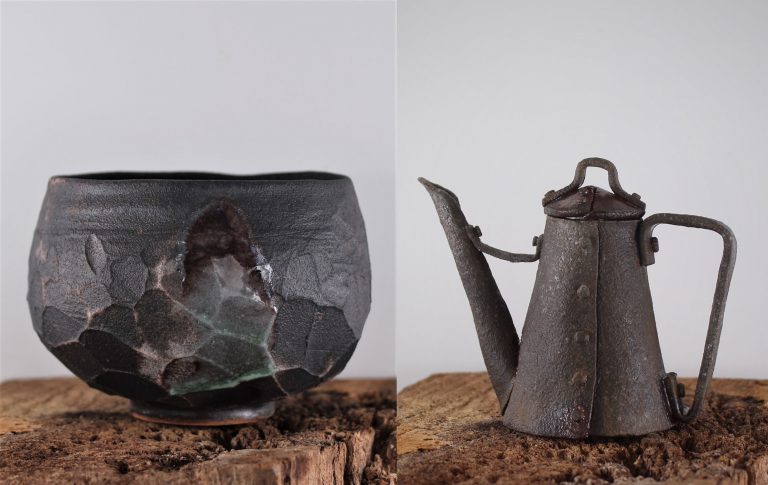
Artwork by Chang Yi titled “Crudus” (Left) and “Tea with the Tin Man 1” by Tan Kae Hyeok (Right)
Each artwork is an elemental collaboration in every step as soft clay is first wedged into harmonious forms with little to no trimming upon completion. Skill and technique are paramount. Often, a human element is intentionally underscored with hand-built textures from fingers pinching and scraping at the surface while natural textures are impressed using tree bark, stones, and termite-eaten wood.
When wood-firings are not available, gas kilns are used to maintain a sense of the organic and unpredictable instead of electric kilns that would otherwise produce more stable and consistent results. Even the flames themselves are compelled to make their mark as the Master Potter arranges each artwork inside the kiln to direct the flow of fire.
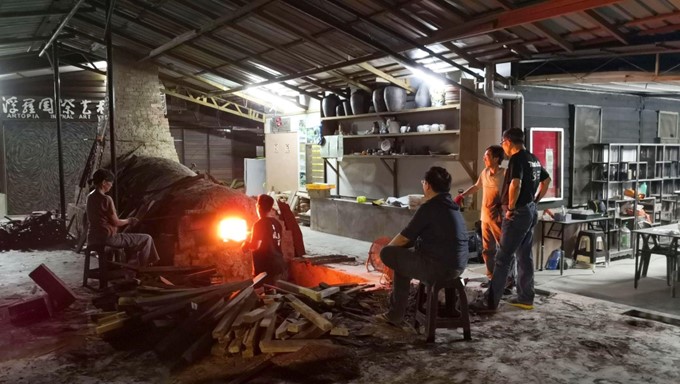
Penang potters on wood-feeding shifts at the traditional Anagama kiln in 2022.
The labour and heat of wood-firings are intense as potters take turns in four-hour shifts. The kiln’s internal atmosphere is controlled only by the speed, quantity, and type of wood being fed into it and air vents that feed or starve oxygen into the space, allowing handlers to induce chemical reactions that bring out richer colours and textures as heat, salt, and gases react together at temperatures as high as 1300°C.
Some wares are intentionally placed to endure the blazing heat, while others are strategically sidelined to withstand it from afar, resulting in fiery licks and gradient smoke shadows like brushstrokes from the inferno as each piece is put to the test. Loss rates can be high as there’s always the risk of combustion. Too cold, and the glazes simply don’t activate. Too hot, and you’d melt the entire batch to dull scraps hardly worth the gruelling effort.
Fuel in the form of durian trees from neighbouring orchards in Balik Pulau make for an uncommon but extremely efficient firewood. They smell sweet as they quickly burn into embers and fine ashes, coating everything inside the kiln in less than half the time it takes Japanese kilns to form a coveted natural ash glaze that results in more vibrant and intense colourations.
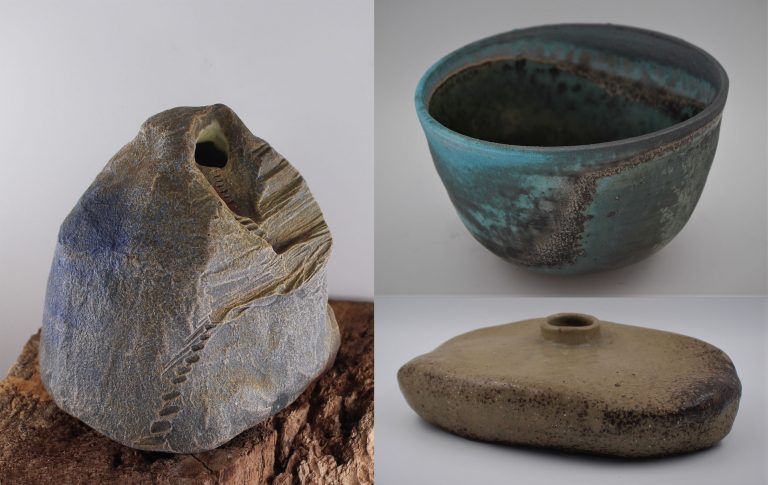
Artwork by Choo Teik Poh titled “A Quiet Place” (Left), “Big Bowl” by Khor Chun Chuan (Top Right), and “Stone Vase” by Cheok Teng Jui (Bottom Right)
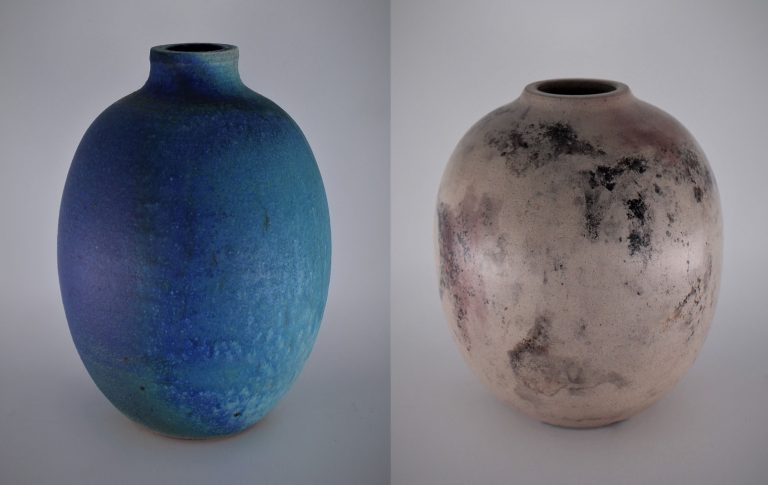
Artwork by Ooi Woi Leong titled “Azure” (Left) and “Enigma” (Right)
Collectively, the artists behind Dao Shang Shao are all members of the Penang Pottery Club. Founded in 2006 by a small group of Japanese ceramicists, the club nurtured their very first local members like Mr. Ooi, who eventually took over in 2014 when the founders departed back to Japan. Since then, the club has expanded their premises significantly and regularly hosts workshops for anyone looking to explore the medium of clay, including large sessions for corporate team-building.
In June, Dao Shang Shao’s first public exhibition titled “Earthly Investigations 2022” showcased over 150 artworks from 30 local ceramic artists at the Penang Institute with support from Artopia. You can view the works on their Instagram page @daoshang.shao and purchase a catalogue to support the movement.
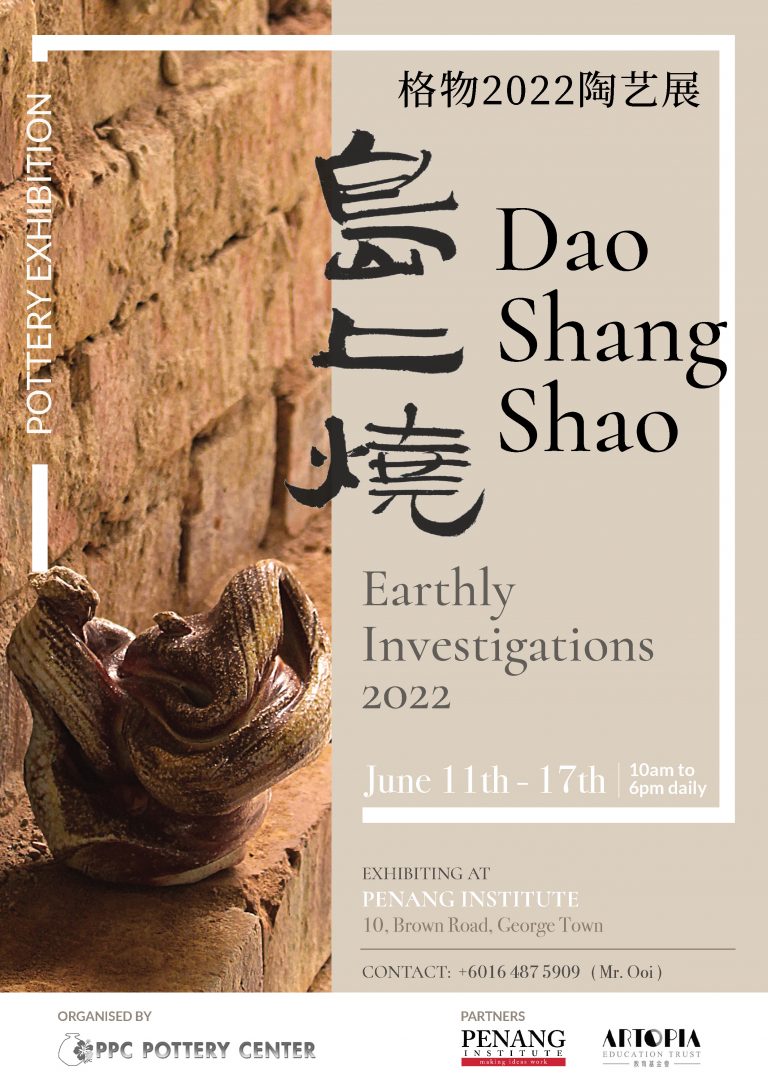
For workshops and classes, find the Penang Pottery Club on Facebook @PenangPottery. Or reach out via email at ppcpotterycenter@gmail.com and Whatsapp +6016 487 5909 (Mr. Ooi).
Located inside the grounds of ESH Garden Landscaping at 2652 Jalan Kebun Bunga, the environment is a comfortable natural outdoors setting just a stone’s throw away from the Botanical Gardens.
Cole Yap is a writer and multidisciplinary artist, with a background in fine art sculpture and an endless curiosity for all things creative across design, art, science, business, and biology. Say hello @cole.yap 🙂

